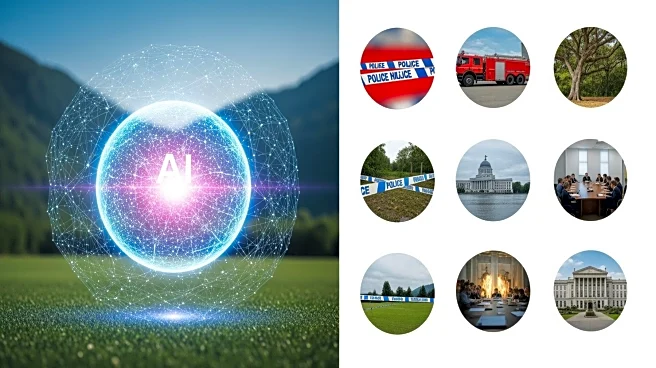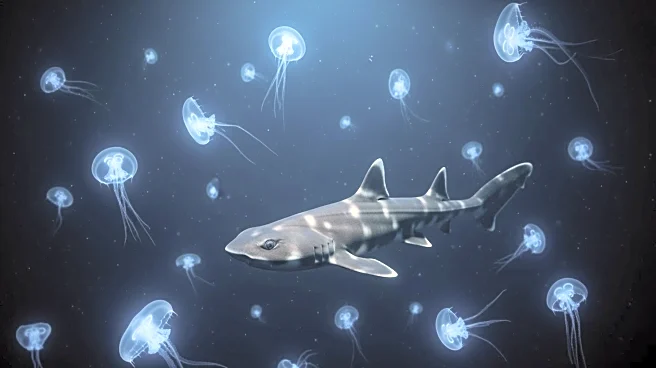What's Happening?
The Earth Species Project, a nonprofit organization co-founded by Aza Raskin, is leveraging artificial intelligence to decode animal communication. The project aims to bridge the communication gap between
humans and animals by identifying language patterns across various species. The initiative is not just about communicating with animals but understanding their cultures and languages. The project has made significant strides, such as discovering that belugas and dolphins have names for each other, and that crows use intimate calls that were previously undetected. The organization is also working on projects involving orcas and crows, using AI to analyze audio and behavioral data to gain insights into animal communication.
Why It's Important?
This research holds the potential to revolutionize how humans interact with the natural world. By understanding animal communication, humans can gain insights into the cultures and social structures of different species, which could lead to more effective conservation efforts and a deeper appreciation of biodiversity. The project also raises ethical considerations, such as the potential misuse of this technology by poachers or developers. However, the ultimate goal is to foster a cultural shift that reconnects humanity with nature, potentially influencing public policy and conservation strategies. The project underscores the importance of using technology to enhance, rather than exploit, our relationship with the natural world.
What's Next?
The Earth Species Project plans to continue its research with a focus on orcas, crows, and other intelligent species. The organization is also considering the ethical implications of its work, aiming to establish international norms and laws to prevent misuse of the technology. As the project progresses, it may lead to new discoveries about animal communication and culture, potentially influencing conservation policies and public awareness. The team is also exploring the possibility of using AI to understand abstract concepts in animal language, which could further deepen our understanding of animal cognition and social structures.
Beyond the Headlines
The project highlights the ethical responsibility of using AI in wildlife research. There is a need to balance technological advancements with the potential risks of disrupting animal habitats and social structures. The initiative also emphasizes the importance of non-invasive research methods and collaboration with biologists to ensure ethical standards are upheld. The broader cultural impact of this research could lead to a paradigm shift in how humans perceive and interact with the natural world, fostering a more sustainable and respectful coexistence.











